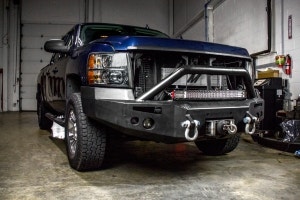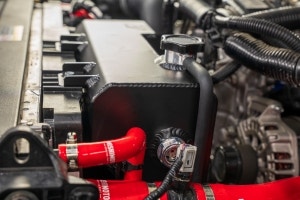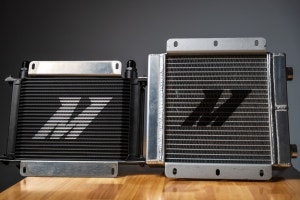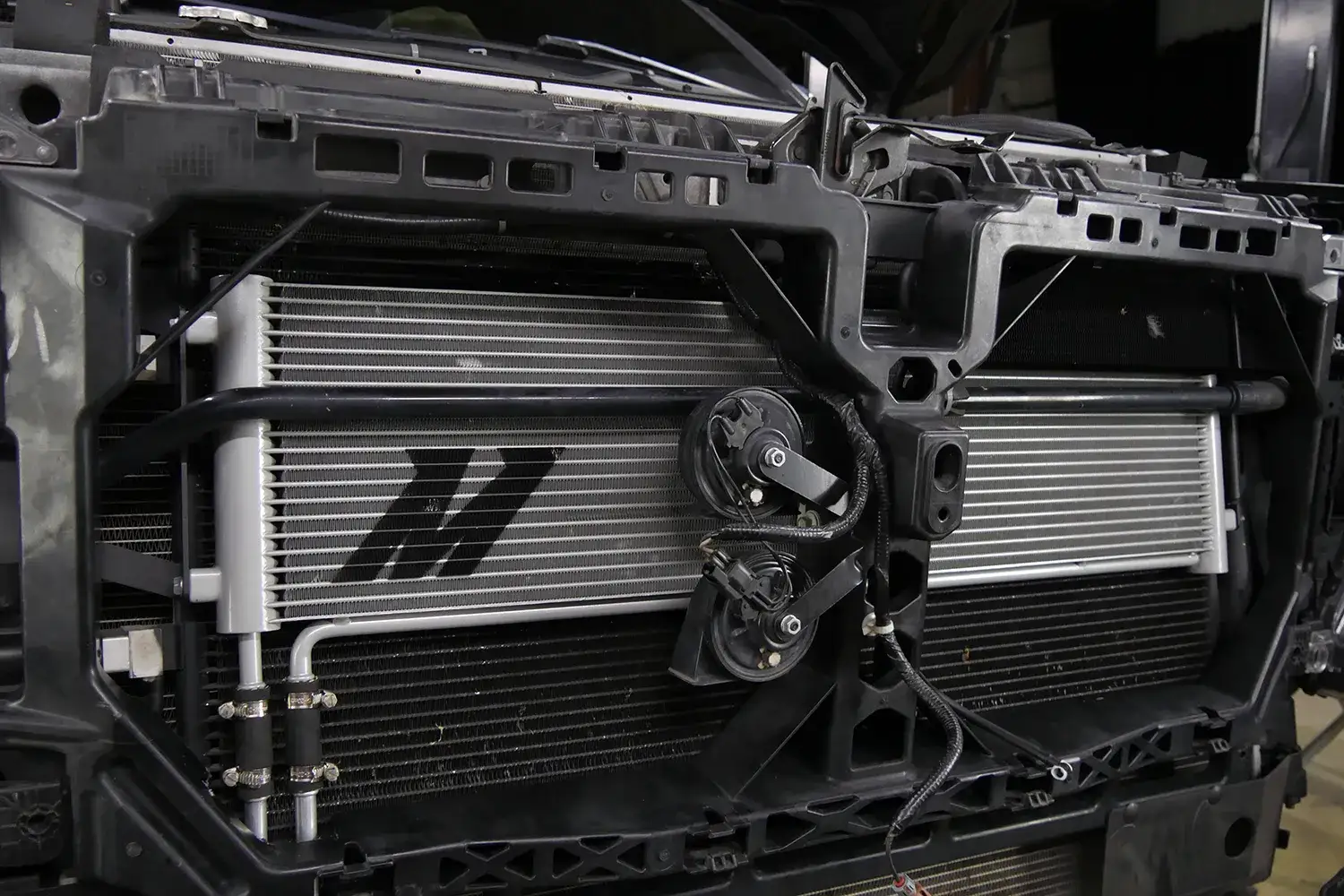
The Stock Intake - MK7 GTI Induction, Part 1
We've got hot hatch fever! One of the newest vehicles to grace our garage, which happens to be our 3rd hatch for intake development, is the new 2015 VW GTI. Although Volkswagen was far from the first company with a hot hatch in its lineup, it was one of the first companies to really push the popularity of the design. VW is synonymous with the term "hot hatch" to most automotive enthusiasts. With the emergence of VW's newest GTI, it's time for us at Mishimoto to design our own intake for this turbocharged 2.0L engine.

GTI arriving at the shop!
Goals
Newer GTIs can either come with or without a Secondary Air Injection (SAI) pipe. Basically, this is a system that forces more air into the exhaust during start up and acceleration, which creates a richer air-fuel mixture. With more air going into the exhaust, the byproduct is less concentrated, and this is generally good for the catalytic converter. For this MK7, we will have two systems - one for SAI cars, which will include a breather filter, and one for non-SAIs.
Our air box will have to be a fully enclosed piece that makes use of VW's efficient fresh air duct. This duct is located behind the front grill and dumps directly into the stock box, so it's beneficial to utilize this feature in our design.
This design will have a one-piece aluminum tube running from the air box all the way to the turbo. The tube will measure a full three inches in diameter the entire length, ensuring a high amount of airflow. , which puts less restriction on the overall design of the intake tube and will make power gains safe on a stock tune.
Stock Intake System

Stock MK7 GTI intake

Stock MK7 GTI intake
The stock intake system on these hatches is not that complex, especially because VW is not using a MAF on the intake. The routing of the battery cable is an interesting aspect of this design. As you can see above, part of it is underneath a section of the box and then attached to its terminal box.

Stock MK7 GTI intake SAI connection

Disassembly of the MK7 GTI intake system

Air filter coming out of the stock MK7 GTI intake

Empty MK7 GTI parts

Turbo inlet, if you look close you can see a piece of the turbo!
Now that we have the intake removed, we can take a good look and understand how Volkswagen designed these MK7 GTI parts. Here you can see how the fresh air duct is directed into the box from the front grill.

Stock MK7 GTI parts inspection

Stock MK7 GTI parts inspection
If you look closely, you can see a small tube attached to the bottom of the box, underneath the slope on the right side. This drains any moisture that can finds its way into the box. We all know water is the last thing we want in an intake box.

Stock MK7 GTI parts inspection
Take a look at the accordion style tubing for the turbo piece. A lot of stock intake systems use this design to dampen the torqueing the engine gives under acceleration. This releases the stress put on the tube and allows it to flex with the engine.

Factory turbo outlet tube
Here are some other shots of the front grill showing the direction of the inlet duct that attaches to the air box.

Factory air scoop inlet

Another shot of the factory inlet

Everything removed
Coming Up
We have some interesting stuff in store for this hatch. The next step is to get a working prototype ready to show everyone. Keep your eyes peeled for our next post!
Cheers,
-Diamaan




